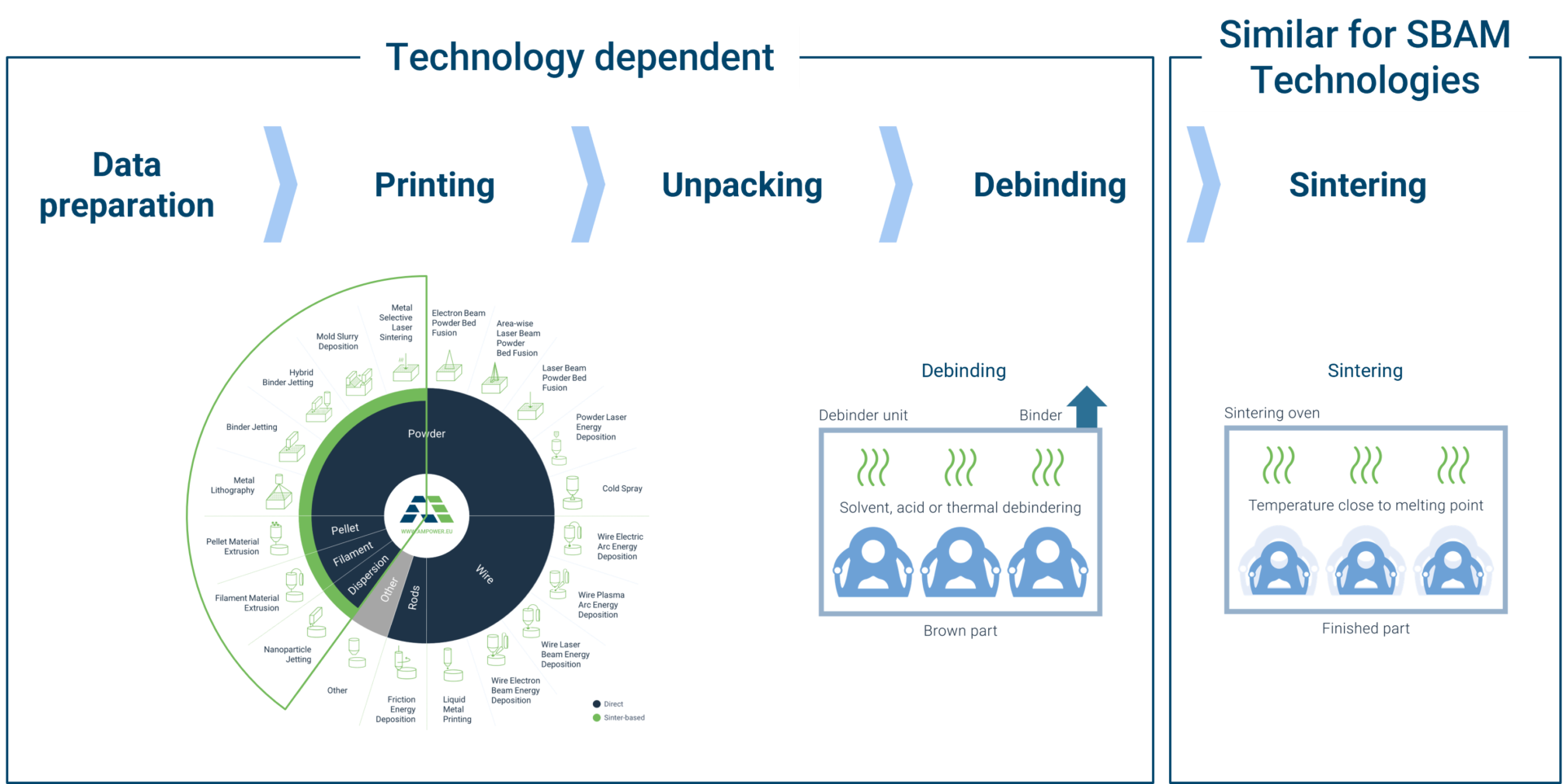Cost in numbers-old
Cost in numbers
Cost per volume approach for quick cost estimate
During the phase of business case identification, it is often necessary to estimate the manufacturing cost without a final design. For this purpose it can be helpful to come up with a rough estimate by applying the cost per volume.
After giving an overview of cost per cm³ for all technologies, additional considerations are given for each of the main metal technologies below.
Cost per volume comparison
Big spread even within technologies

High volumes and large multi laser system
High volumes and large system
Low volumes and small single laser system
Low volumes and small system
Small system, 5% nesting
Medium size system, 50% nesting
Open system vs. closed system
High resolution nozzle
Low resolution nozzle
Manufacturing volume
- 30% overhead for system and labor
- No margins
- Manufacturing volume 100 to 10.000 parts
Laser Powder Bed Fusion
Laser Powder Bed Fusion cost are directly linked to part volume
- Min: 2,4 EUR/cm³
- Max: 10,0 EUR/cm³
For Laser Powder Bed Fusion (L-PBF), costs are directly linked to the volume of the build job, consisting of the part and support volume. High investment costs into the printer paired with long build times often result in the machine cost accounting for over 50% of the part cost. Reducing the part volume thus directly leads to a cost reduction.
The lowest cost per cm³ can be achieved on a multi-laser system for parts produced in high volumes. Especially latest developments with machines that are equipped with up to 12 lasers can drive down these costs even further.
Electron Beam Powder Bed Fusion
Electron Beam Powder Bed Fusion cost comparable to LPBF
- Min: 2,4 EUR/cm³
- Max: 7,8 EUR/cm³
The cost for Electron Powder Bed Fusion (E-PBF) are on a similar level than those for LPBF. For suitable applications such as bulky parts that can be stacked in the build chamber, EPBF usually has slight cost advantages. On the other hand, recent developments on LPBF processes and machines have made LPBF more cost-effective for multi-laser systems.
Binder Jetting
Lowest cost per part for high-volume manufacturing of small components
- Min: 1,2 EUR/cm³
- Max: 19,1 EUR/cm³
For Binder Jetting, the packing density and the system size have the biggest impact. The build time per job does not depend on the number of parts in the build envelope. Therefor there is a big spread between the minimum and maximum cost per cm³. When utilizing the build volume to 50% on a medium-sized system, the cost per cm³ can be reduced to below 1€.
When calculating part costs it needs to be taken into account that it might require several iterations until arriving at the right part. This is due to the fact that the shrinkage during sintering is still hard to predict.
Material Extrusion
Low hourly rate, but also low print speed
- Min: 4,7 EUR/cm³
- Max: 5,9 EUR/cm³
Even though the hourly rate for Metal ME is lower than for other printers, the relatively low print speed leads to costs around 5 Euro per cm³. This is also driven by relatively high material cost when using metal filaments.
The minimum costs can be achieved for open systems that can work with any type of material. More productive nozzles speeding up the printing process can further decrease the cost per cm³.
Laser Metal Deposition
Nozzle resolution with big impact on LMD cost
- Min: 1,2 EUR/cm³
- Max: 4,5 EUR/cm³
For Laser Metal Deposition (LMD), the nozzle resolution has a big impact on the deposition speed and cost per cm³. The nozzle thus needs to be chosen depending on the application requirements for cost and resolution.
Wire Arc Additive Manufacturing
WAAM with lowest overall cost
- Min: 0,4 EUR/cm³
- Max: 0,8 EUR/cm³
For Wire Arc Additive Manufacturing (WAAM), the manufacturing volume has the biggest impact. The technology is especially suitable for larger volumes so that the setup and data preparation spreads over a larger volume. This leads to the lowest overall cost per cm³.
Since WAAM generally results in very rough parts requiring substantial post processing, these costs are only hardly comparable with other technologies in this section.



